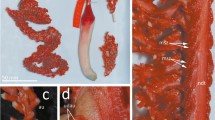Abstract.
The phylogenetic relationships of eight species of incirrate octopodid from western Antarctica were investigated using molecular sequence data from the mitochondrial 16s ribosomal RNA gene. The genus Pareledone, which is endemic to the Antarctic, was found to be polyphyletic. On the basis of this and previous morphological studies, it is suggested that species that are morphologically similar to Pareledone polymorpha should be removed from the genus. This simplifies the diagnosis of Pareledone: a new diagnosis is given. The subfamilies Eledoninae and Graneledoninae were also found to be polyphyletic. The applicability of using the presence of an ink sac as a taxonomic character to define the subfamilies is discussed. Loss of an ink sac is almost certainly an adaptation to depth and use of this character has produced an artificial classification with no evolutionary significance. As the other two subfamilies, Octopodinae and Bathypolypodinae, are also separated by this character, it is probable that all the subfamilies of the Octopodidae are polyphyletic. The use of subfamilies should therefore be discontinued until our understanding of the evolution of the family Octopodidae increases.
Similar content being viewed by others
Author information
Authors and Affiliations
Additional information
Electronic Publication
Rights and permissions
About this article
Cite this article
Allcock, .A., Piertney, .S. Evolutionary relationships of Southern Ocean Octopodidae (Cephalopoda: Octopoda) and a new diagnosis of Pareledone. Marine Biology 140, 129–135 (2002). https://doi.org/10.1007/s002270100687
Received:
Accepted:
Issue Date:
DOI: https://doi.org/10.1007/s002270100687




